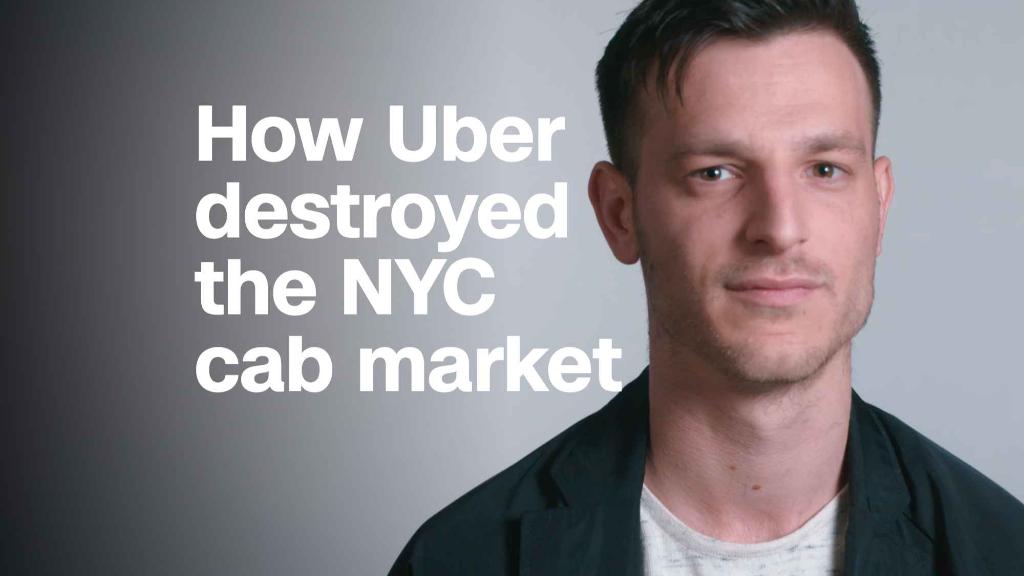
The "gig economy" of freelancers and short-term workers comprises a big chunk of America's labor force, but it may not be growing as much as you think.
"Alternative" workers, which include independent contractors, people working for temporary and contract staffing agencies and on-call workers, accounted for 10.1% of the workforce in 2017, according to a survey released Thursday by the Department of Labor. That's actually down from 10.7% in 2005, when the Bureau of Labor Statistics last performed the survey.
People who did not expect their work to last very long — or "contingent" workers — amounted to 3.8% of the workforce, down from 4.1% in 2005 and 4.9% in 1995. (There is some overlap between the two categories: If you're working for a temporary staffing company but don't plan to stay very long, you fall into both camps, for example.)
That may sound surprising, considering the growth of companies like Uber and Thumbtack that make it easy to work on an ad hoc basis without being a traditional employee. One lesser-known company, the Gerson Lehrman Group, says it has 600,000 people working as freelance consultants — almost as many as Lyft's 700,000 U.S. drivers.
Related: The US economy needs seniors to work longer
But the BLS survey doesn't ask about side jobs you may pick up once in a while for extra money, which accounts for much of the work done on online platforms. Instead, it focuses on people for whom irregular work supplied their main source of income.
The more traditional contingent and alternative workforces, people who work for themselves or in short stints for different employers, haven't changed that much. For example, the research firm Staffing Industry Analysts finds that the share of the workforce supplied by staffing companies is only slightly above where it was back in 2000, at 2%.
Other studies put out by companies and academics have guessed that the gig economy is much larger. The freelance company Upwork estimated in 2017 that 57 million people did some independent work over the course of that year.
"The definition of this work is that it's flexible and the main driver of why people work this way is freedom," says Upwork CEO Stephane Kasriel. "I think it's critical we take as broad a look at the freelance economy as possible, so our country can more effectively make policy decisions that fit the current reality of our workforce."
But not everybody likes working gigs. Although the BLS survey found that 79% of independent contractors preferred their arrangement over a traditional job, 55% of short-term workers would rather have a permanent job.
That may be part of the reason why the numbers came in so low. With so many regular jobs available these days, there's no need to take something without a consistent income stream.
"It's rational to expect that you're not going to see a lot of people working on a contingent basis for their primary form of income in an economy with 3.9% unemployment," says Alastair Fitzpayne, executive director of the Future of Work Initiative at the Aspen Institute.
Also, the BLS survey may not capture everybody who's a contingent or alternative worker because sometimes workers themselves don't recognize it. For example, 57% of the workers who derive almost all their income from online platforms consider themselves employees rather than independent contractors, according to a poll conducted for the U.S. Chamber of Commerce.
Related: California ruling puts pressure on Uber, Lyft and other gig economy employers
The Bureau of Labor Statistics did ask four questions specifically about online "gig economy" platforms, and will release the results later in the fall.
The results of these surveys are contested because they have a bearing on a hot policy debate: Whether labor laws should change to help online platforms and other providers of temporary labor provide some benefits to workers without turning them into employees.
Although more contingent workers had health insurance coverage last year — 73%, up from 59% in 2005 — there's still a gap in benefits between those irregular workers and regular employees. Alternative workers are also disproportionately non-white, and the share of temp agency workers identifying as non-white rose 10% between 2005 and 2017.
In the absence of federal action, online platforms have pressed states to allow them to offer benefits without making their workers into employees, which worker advocates have typically opposed.


